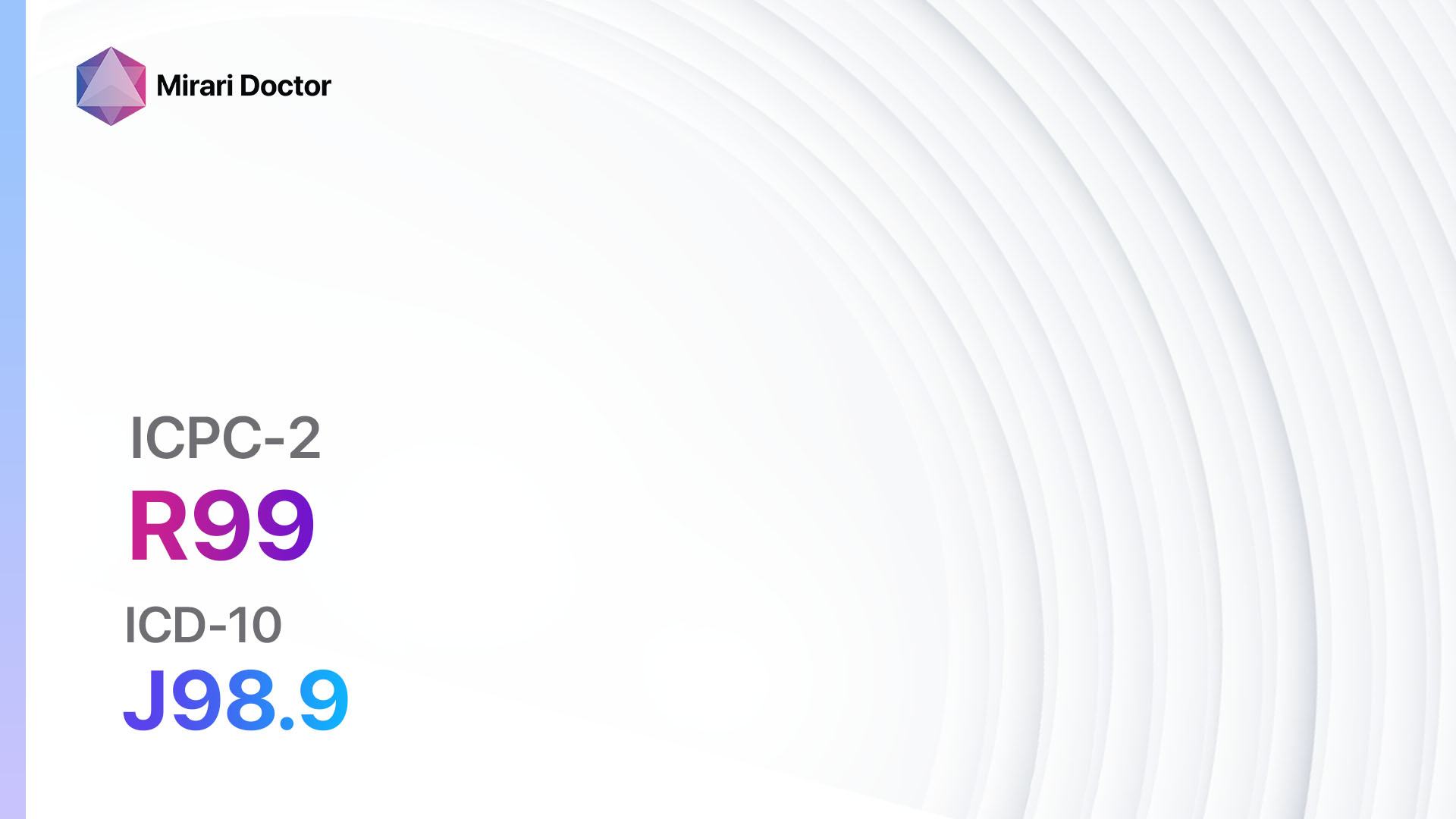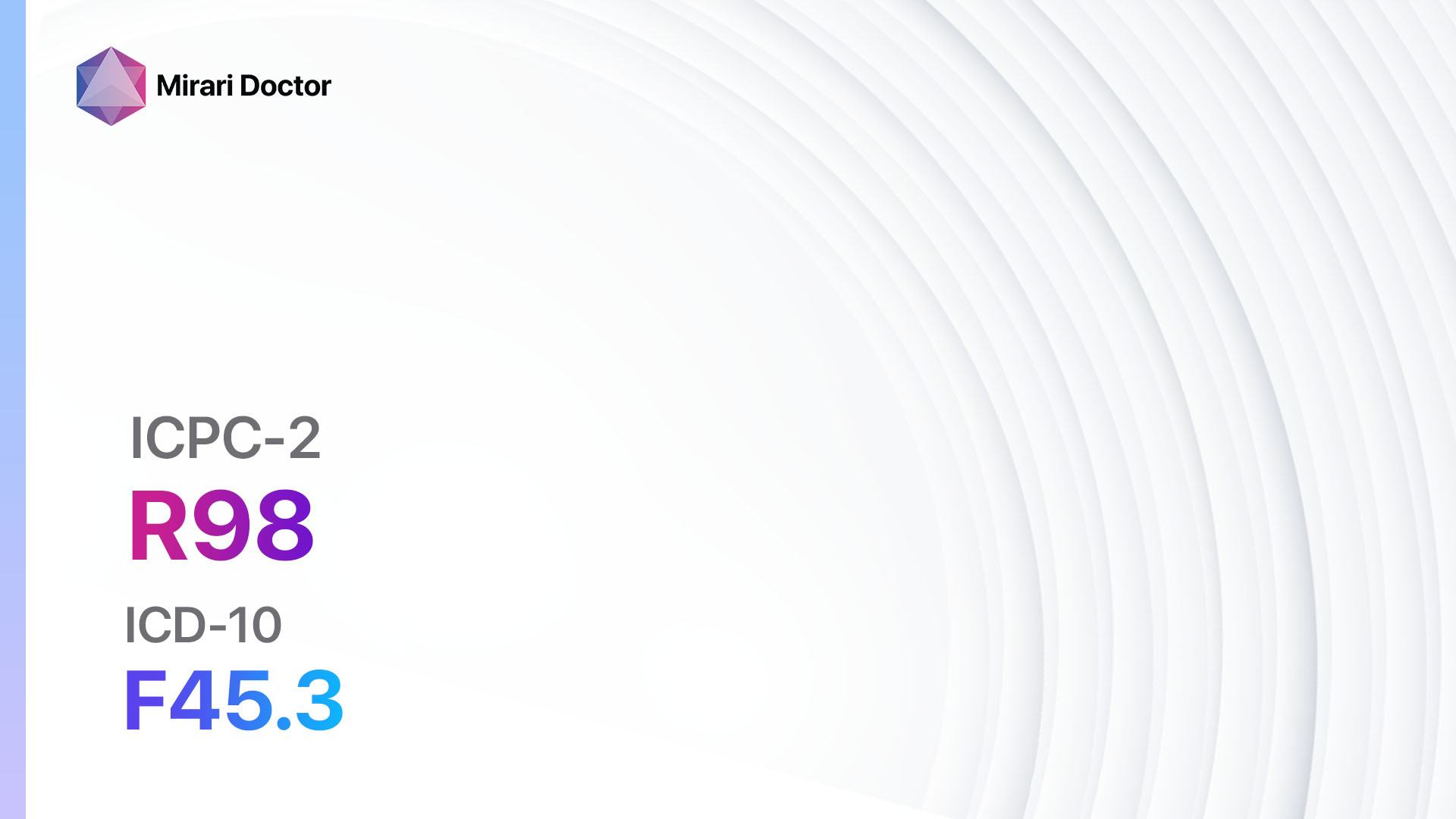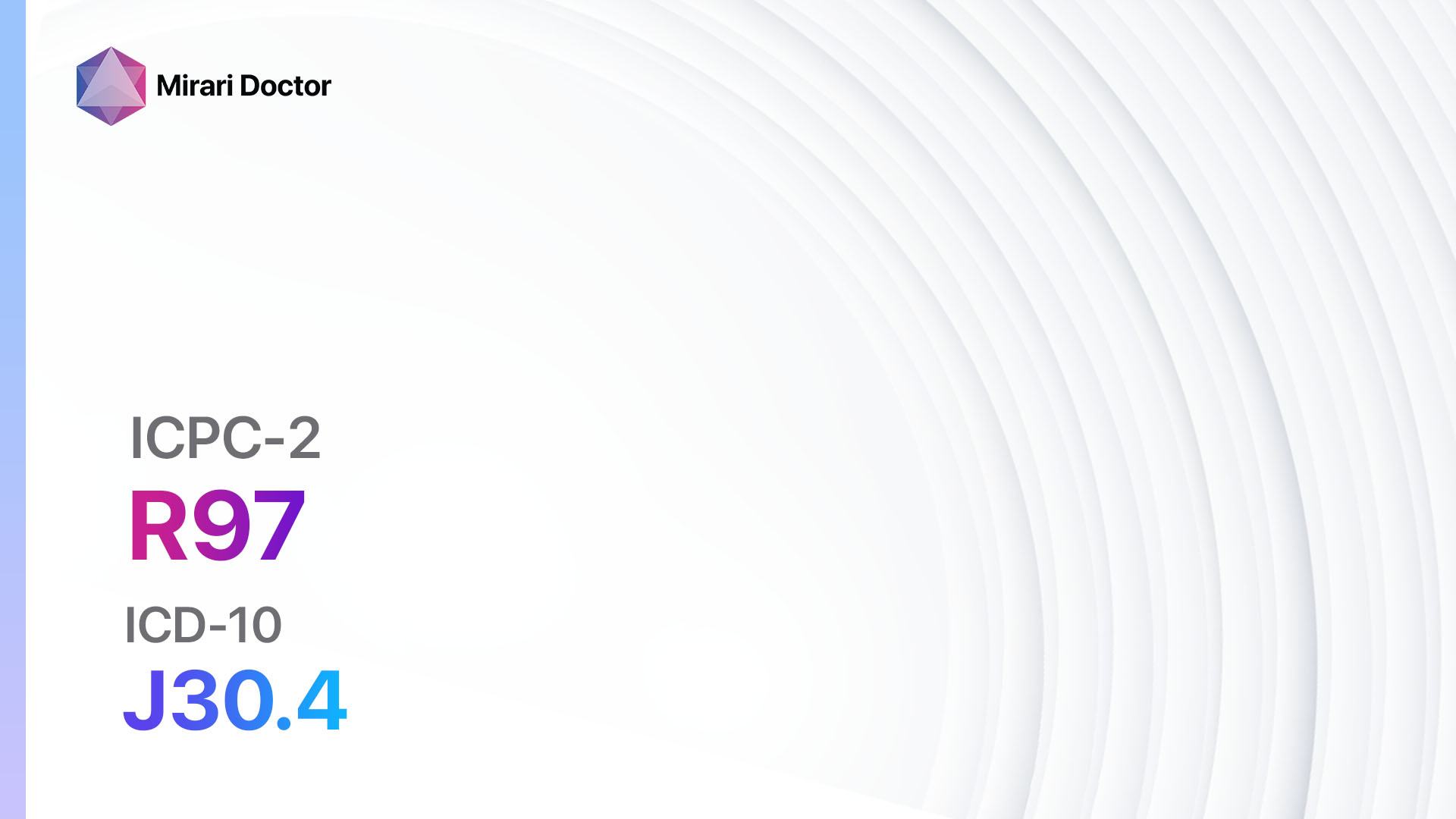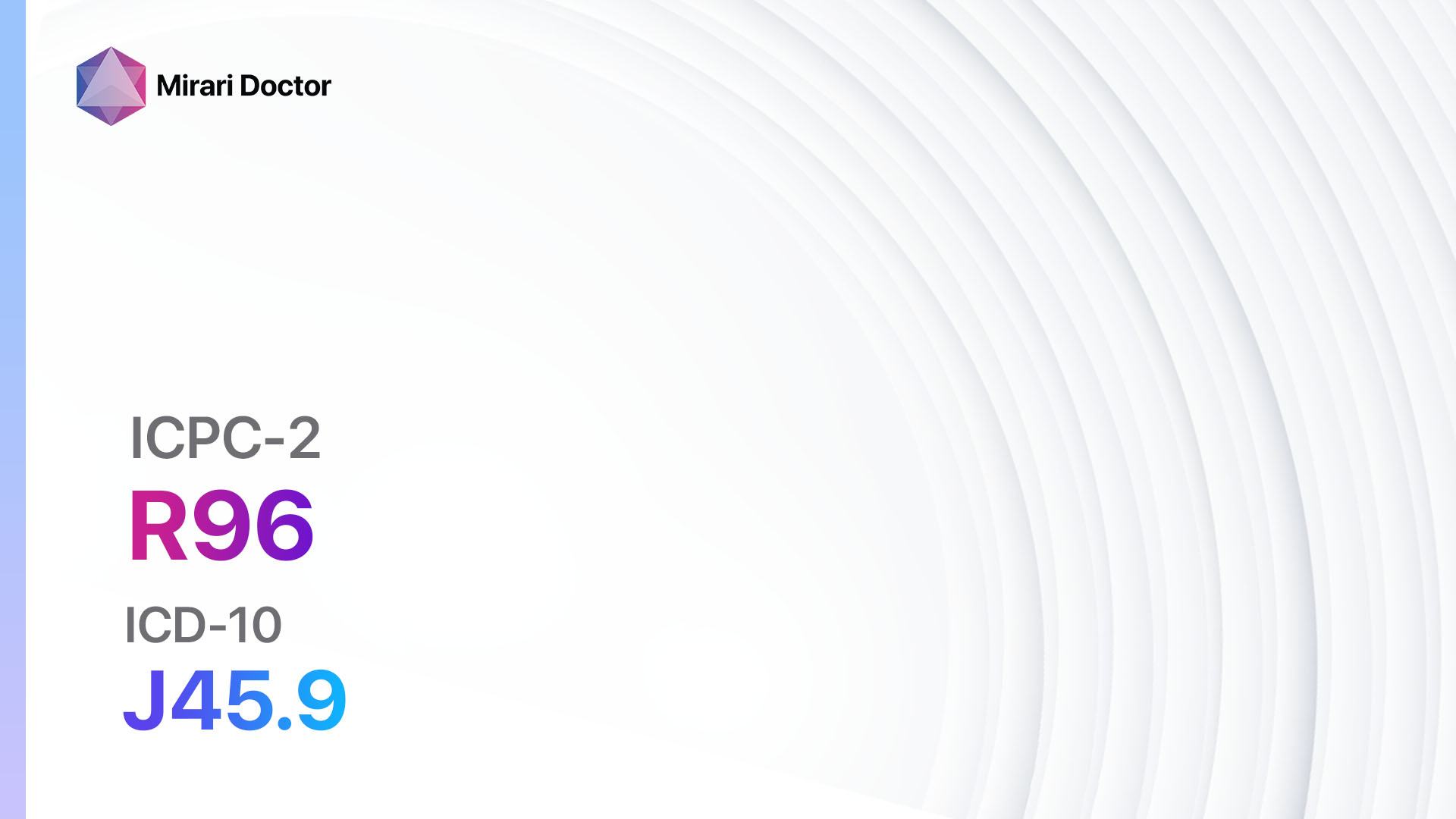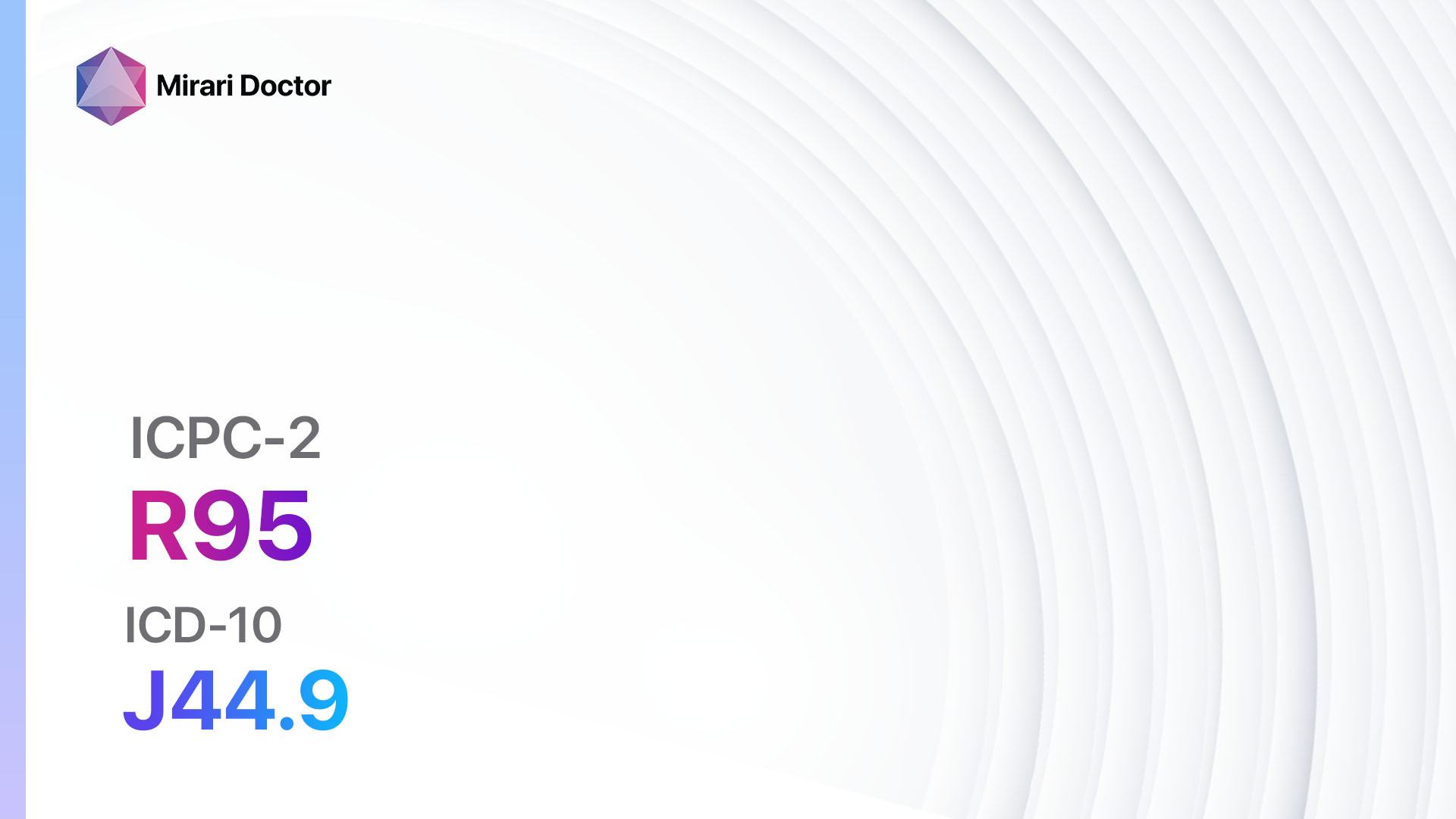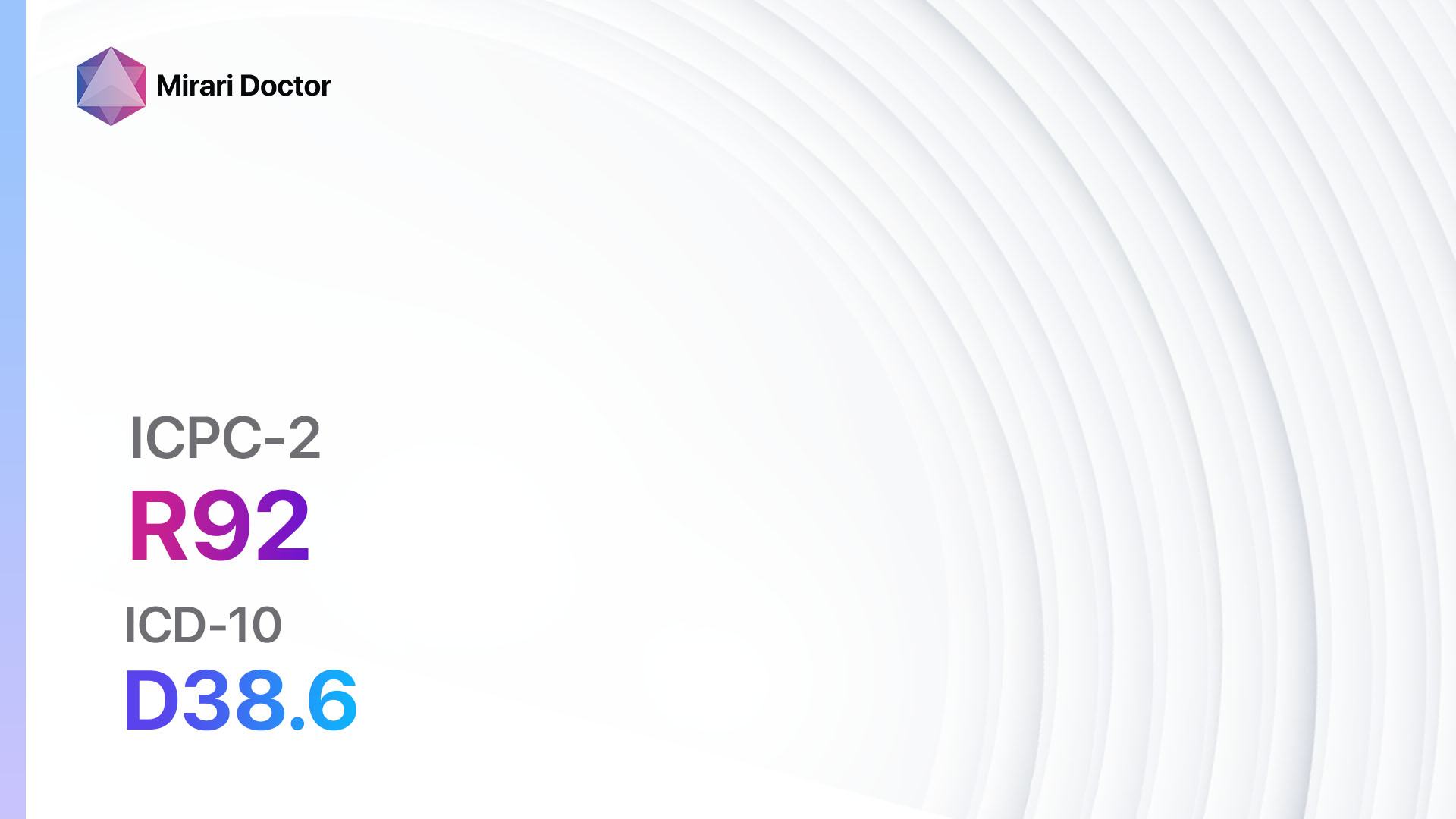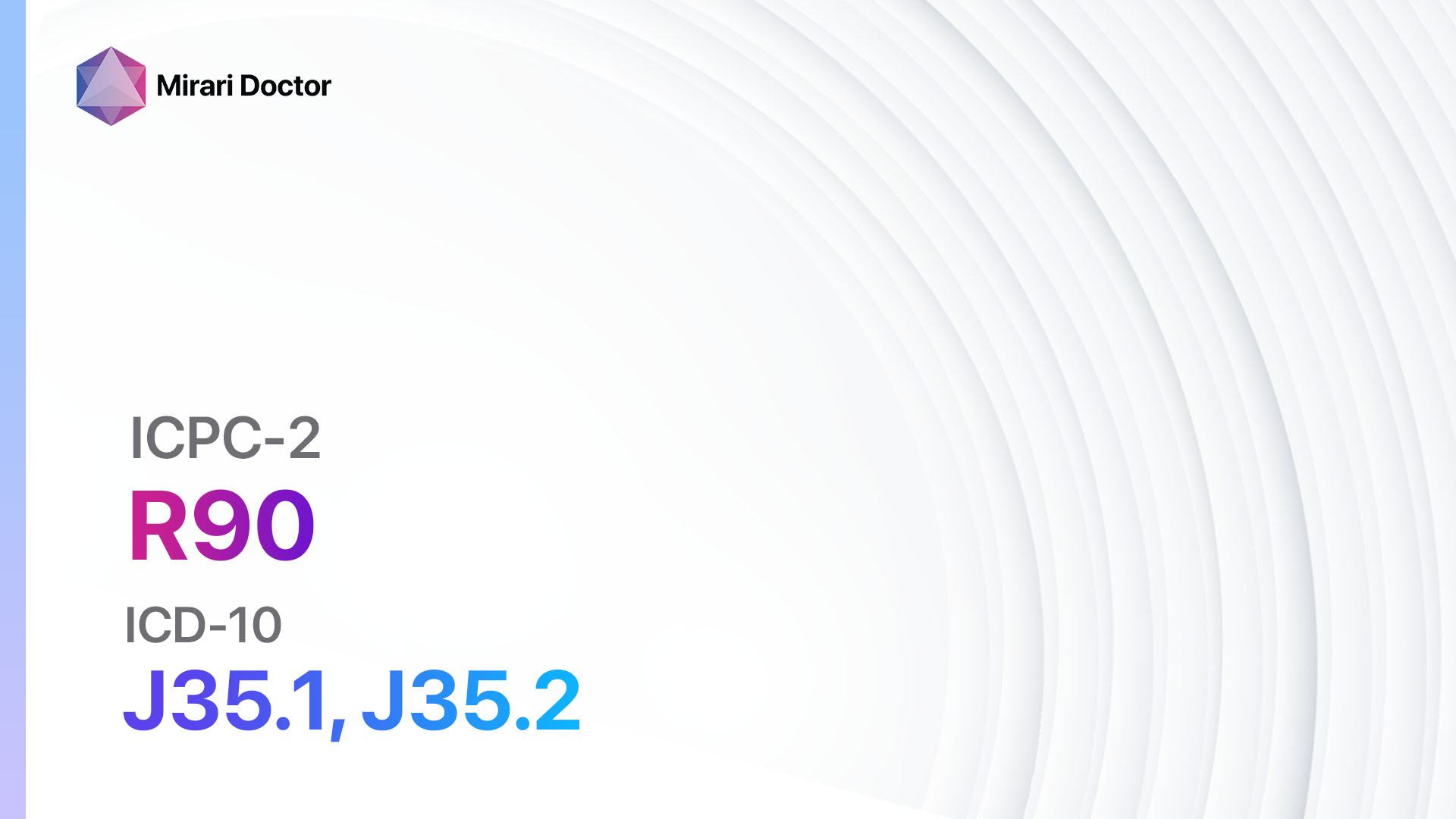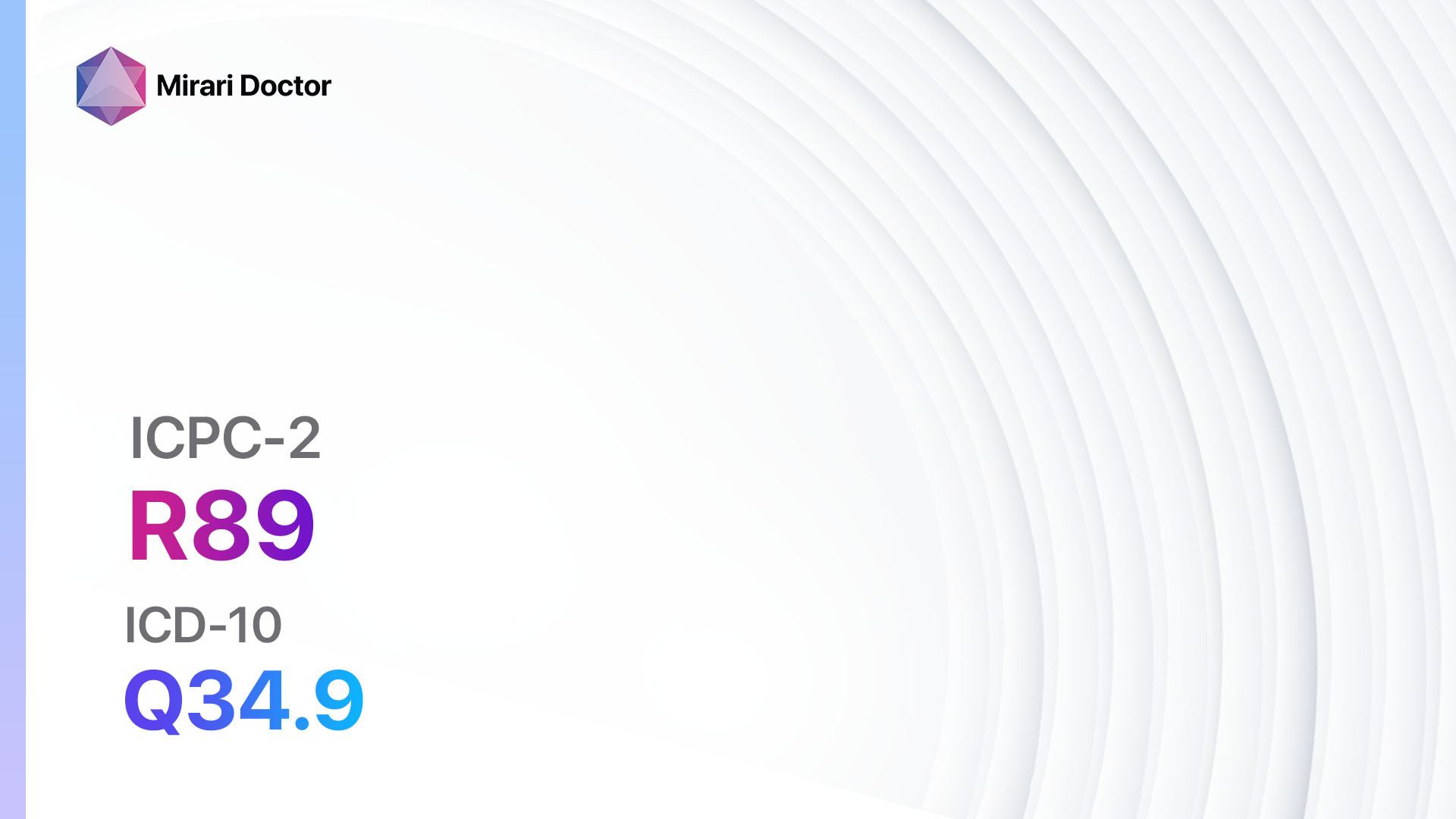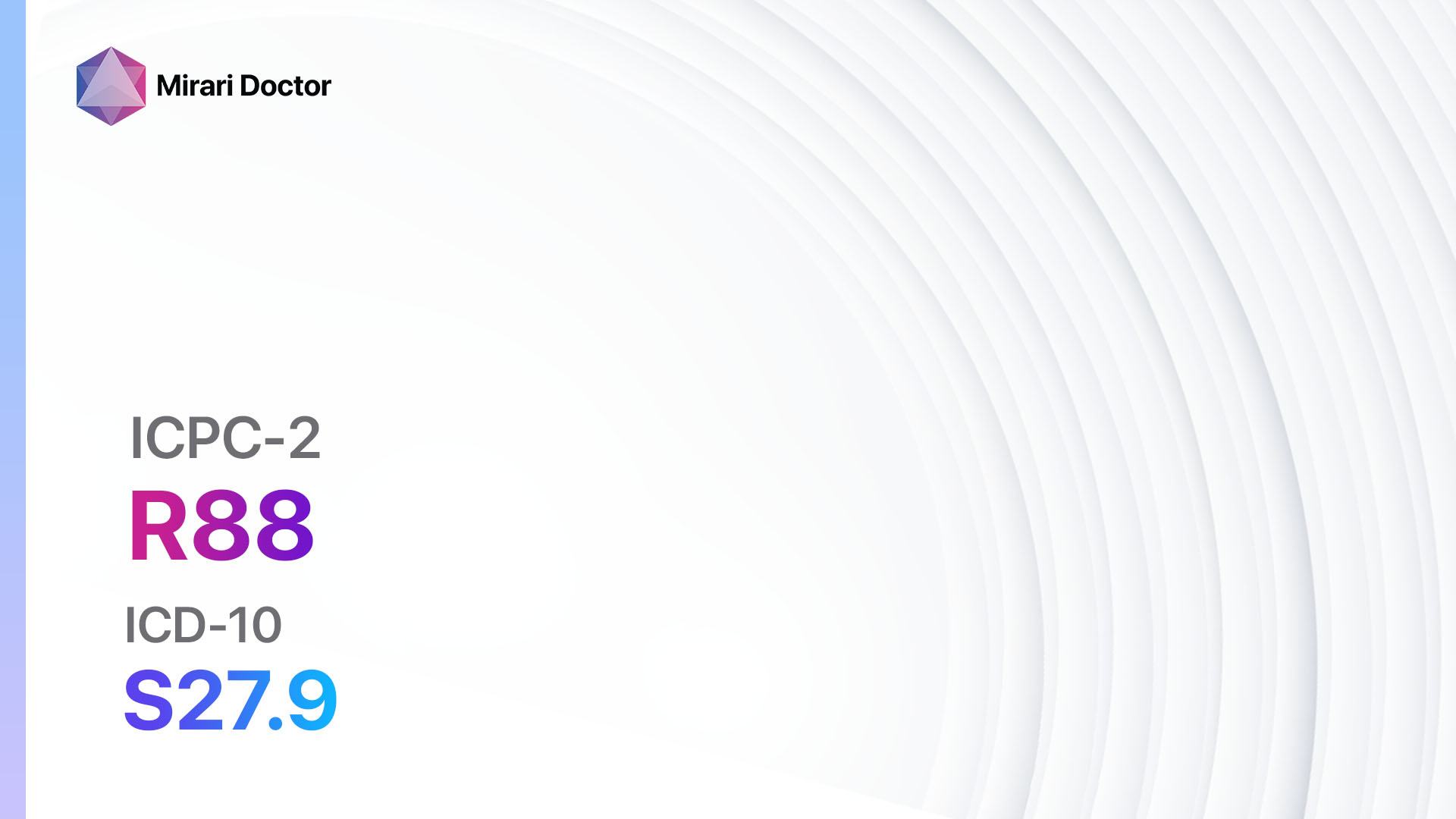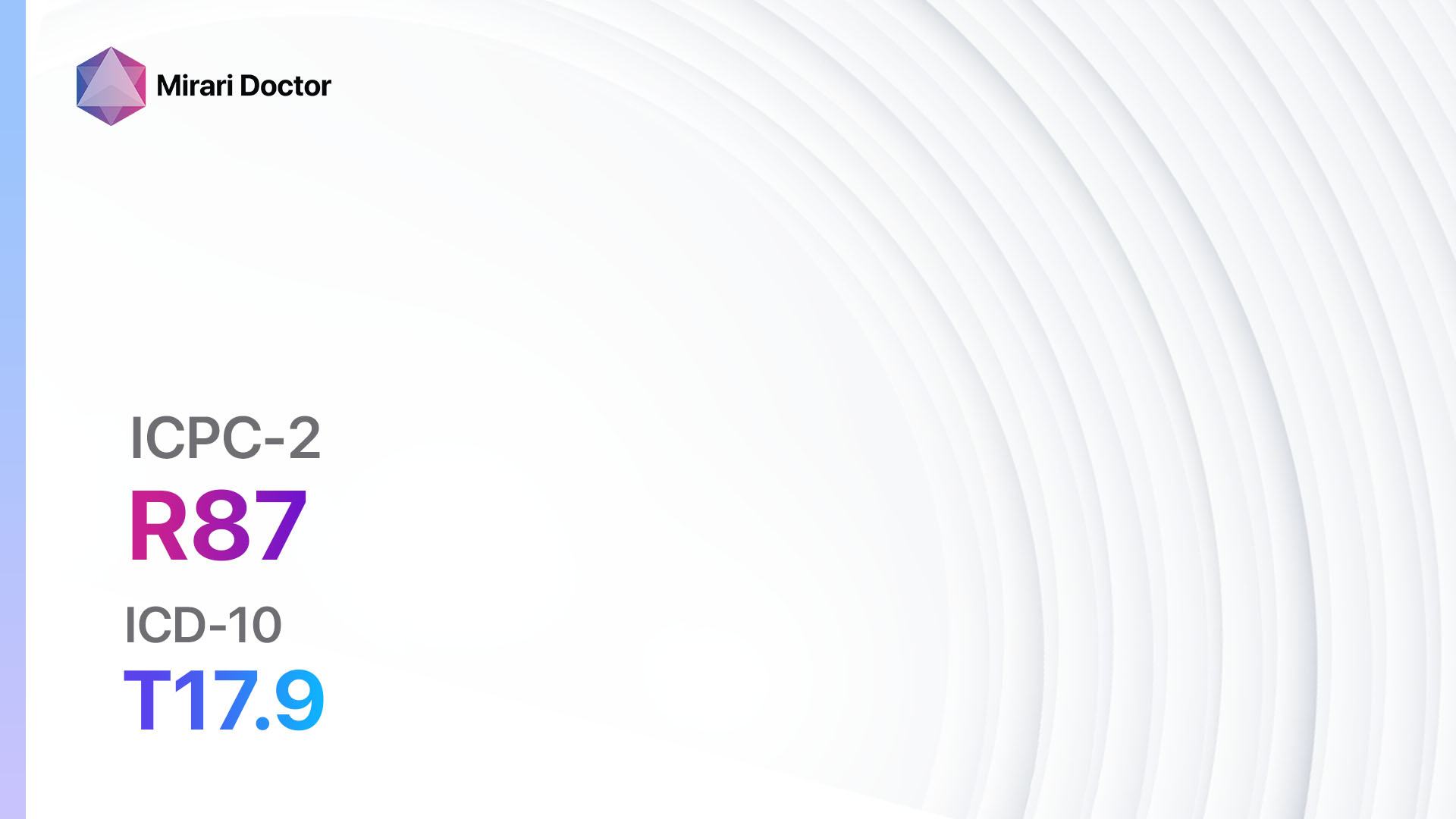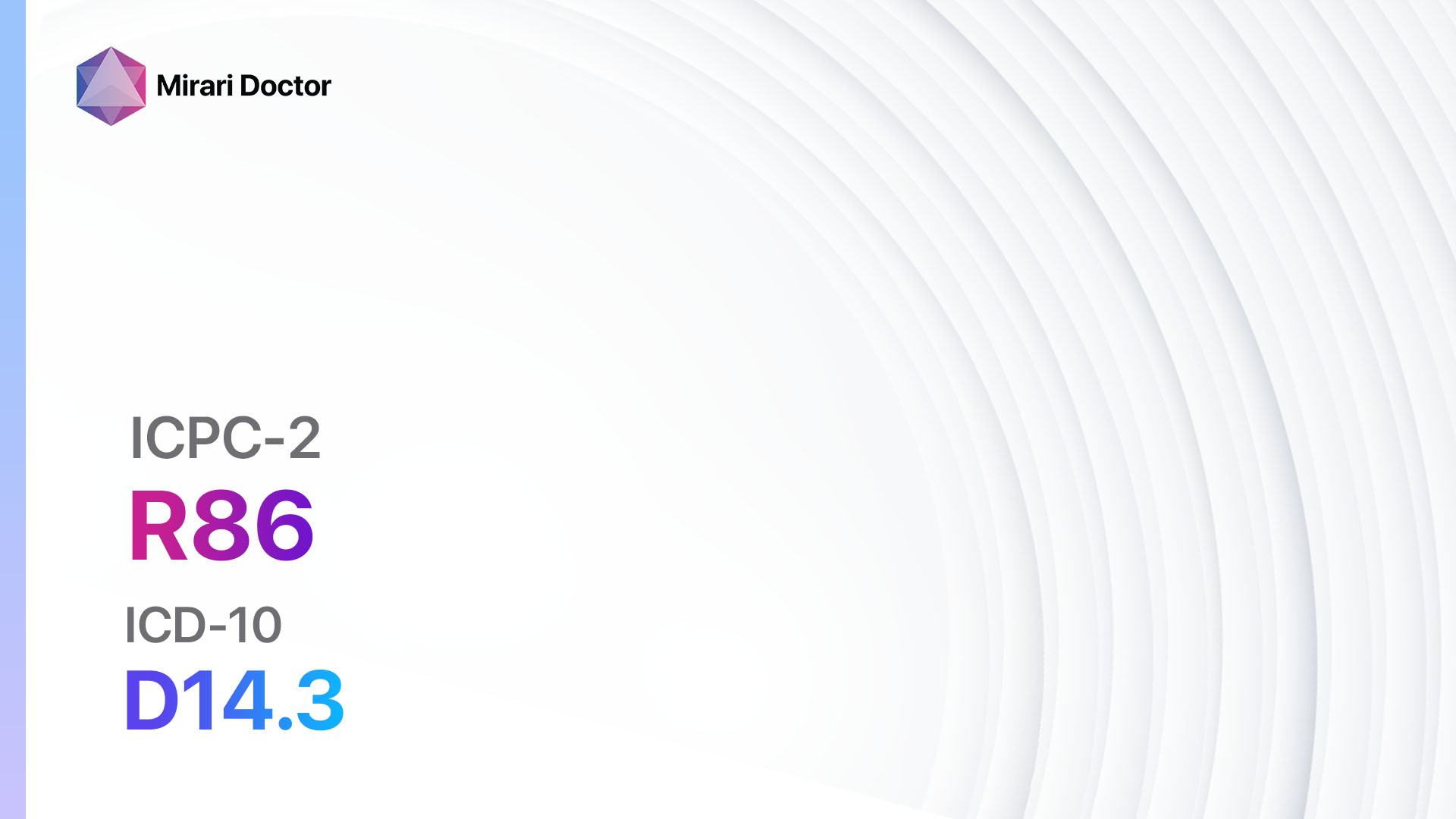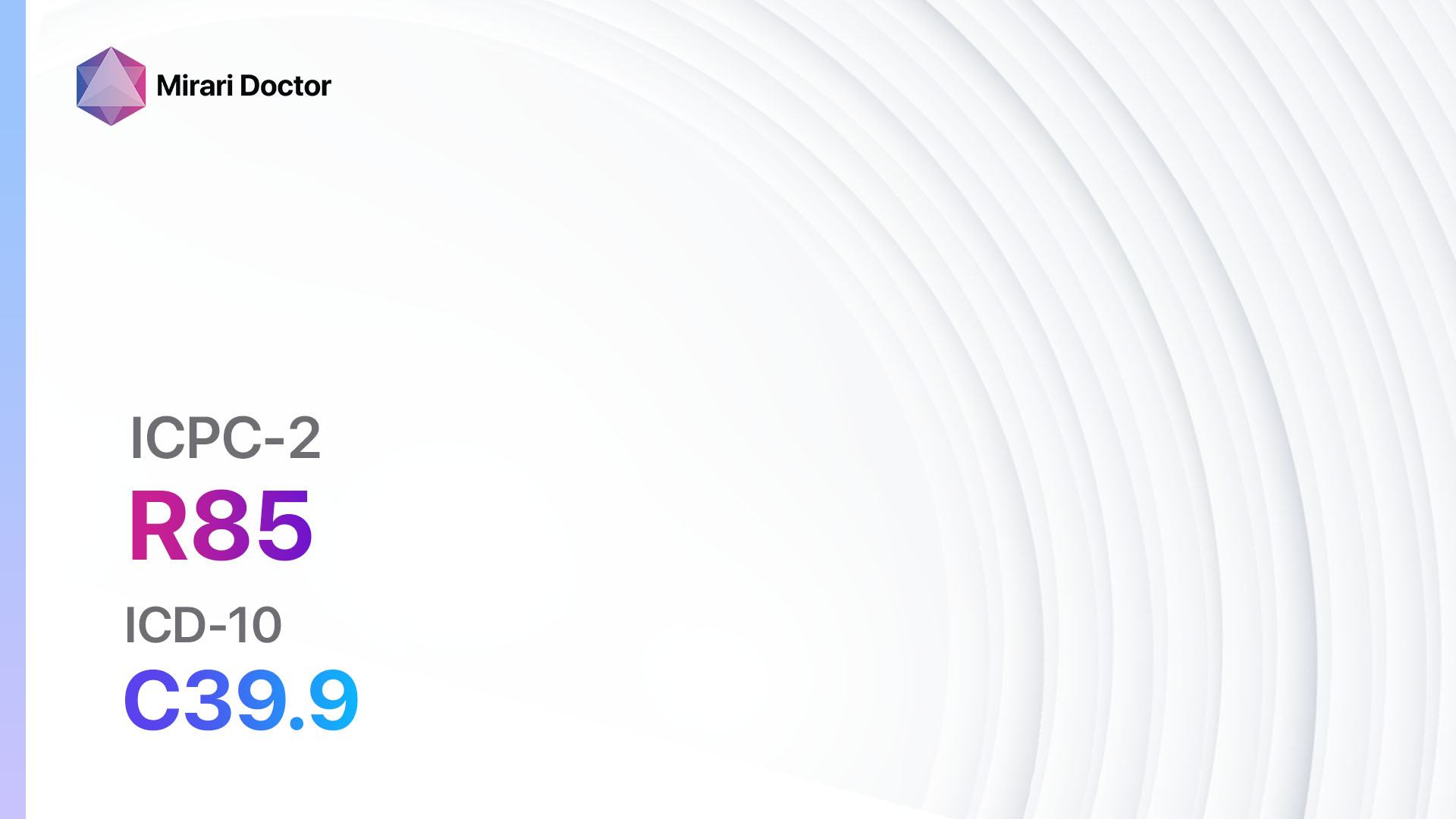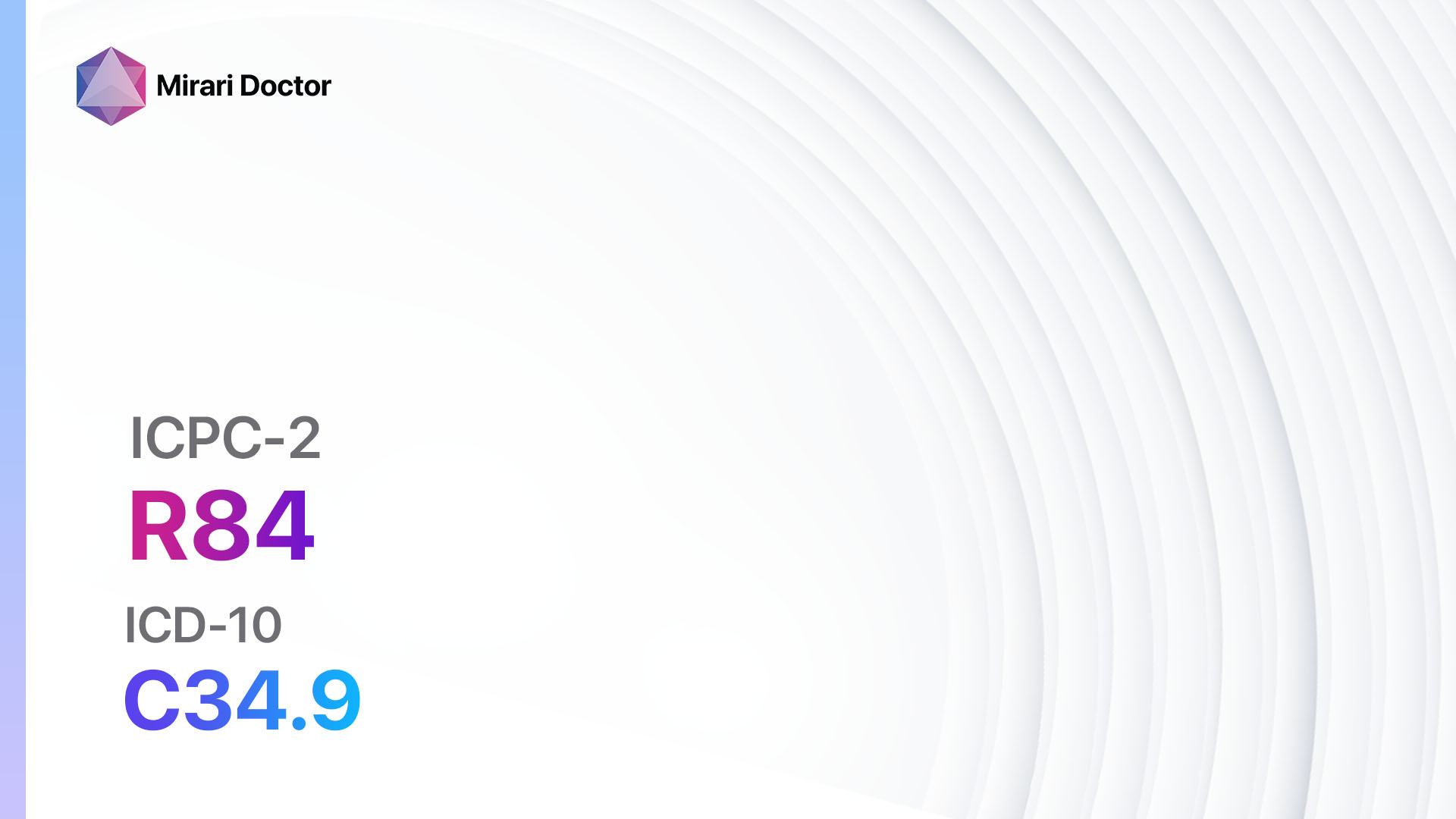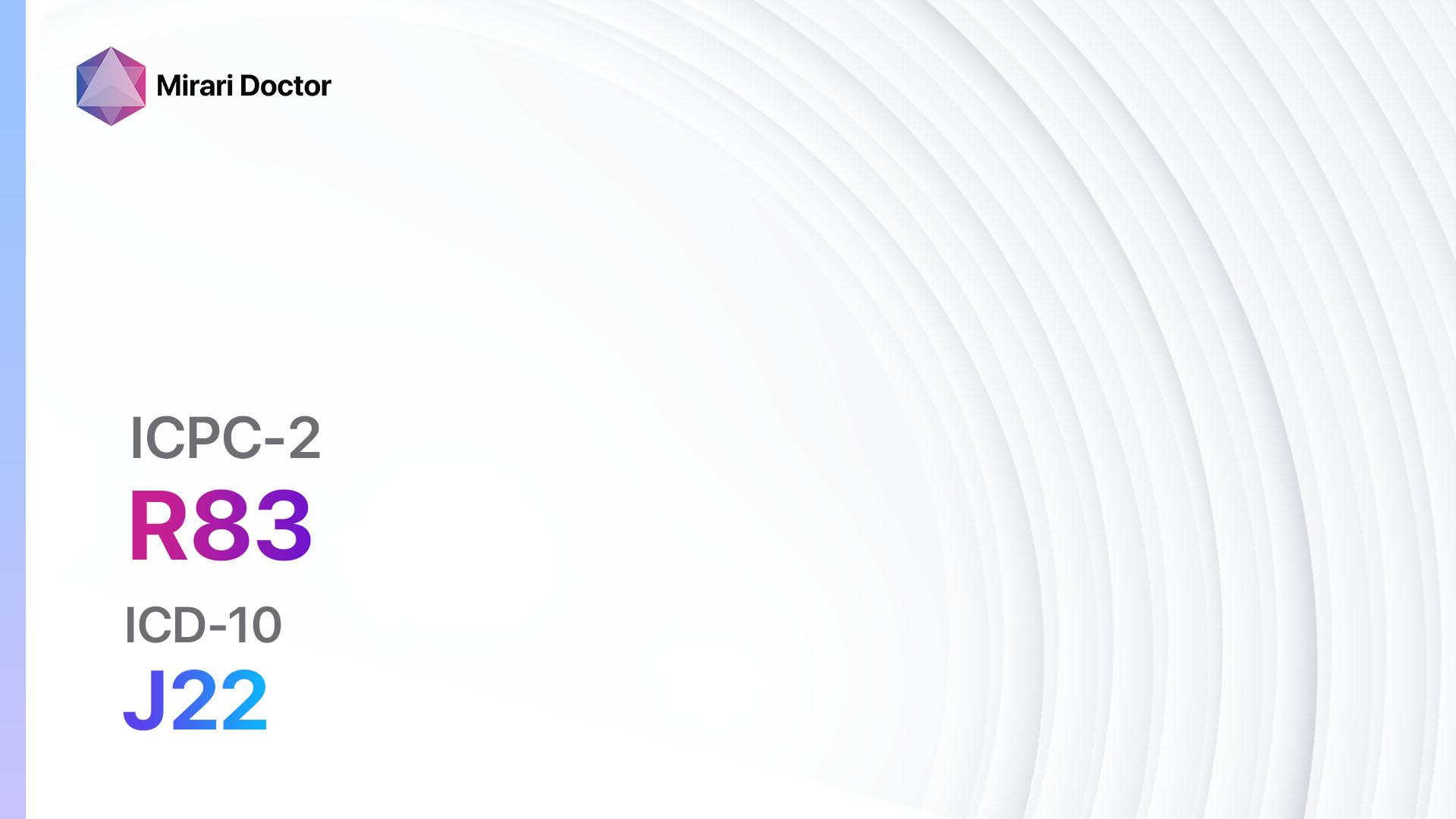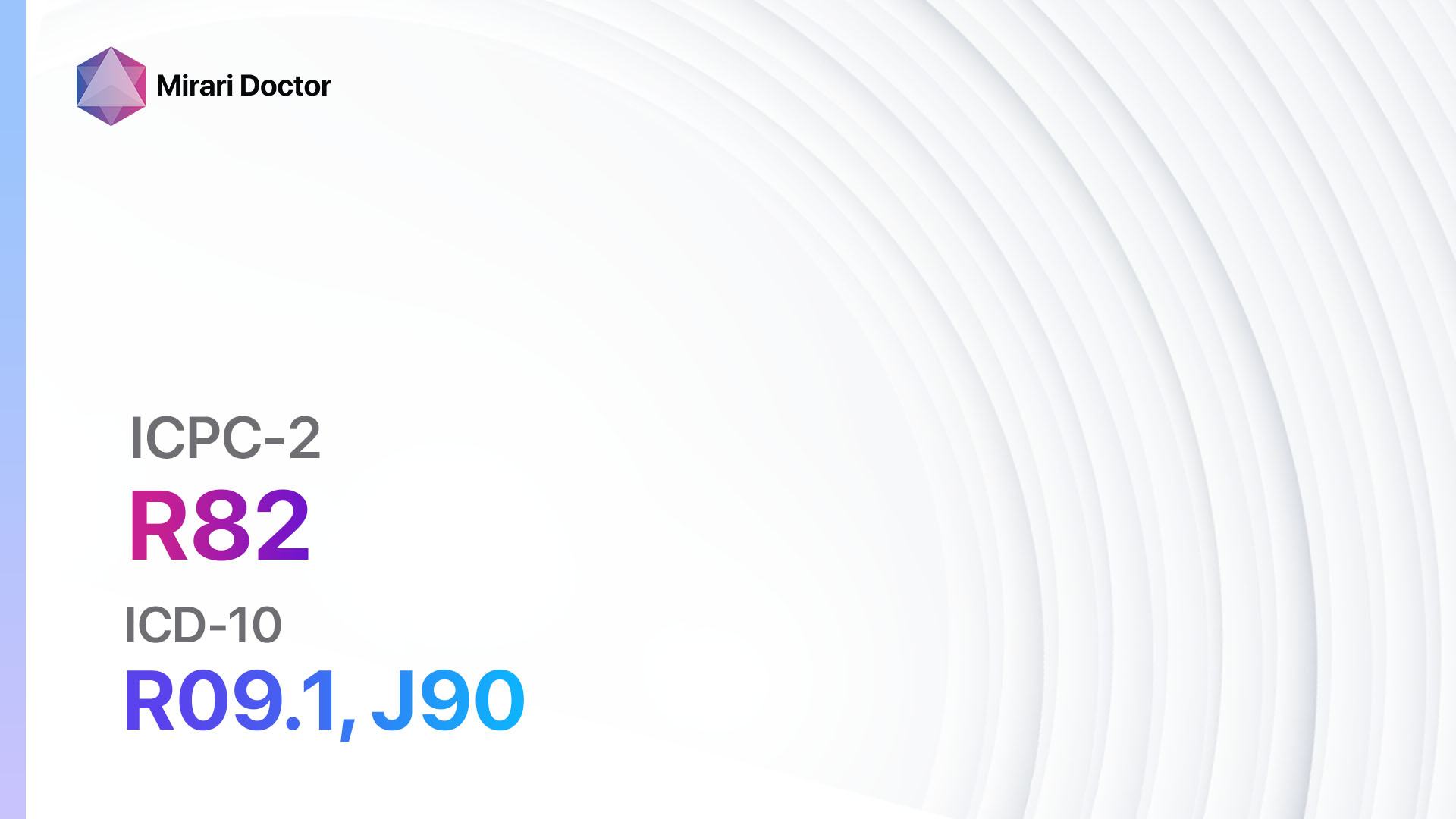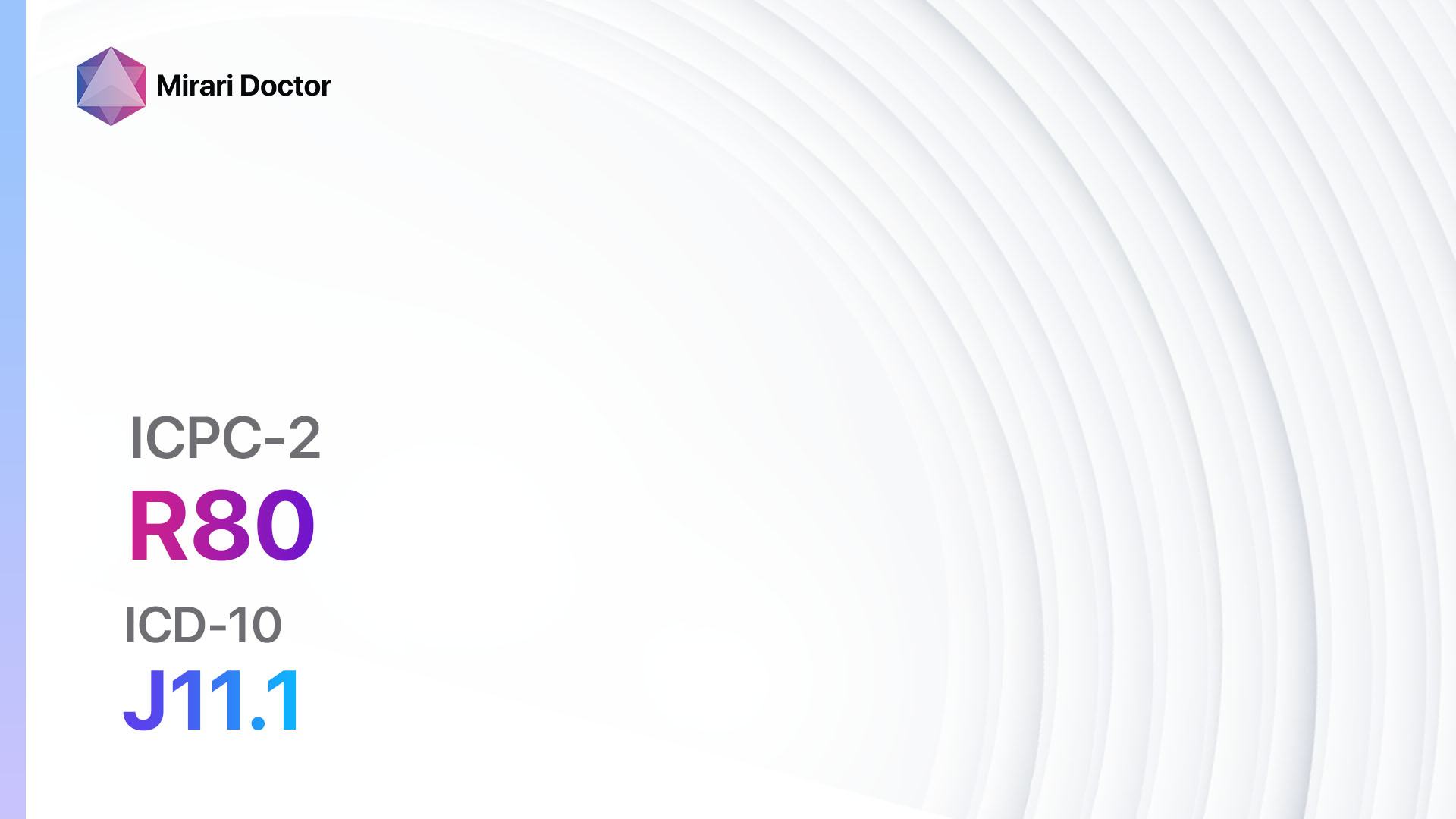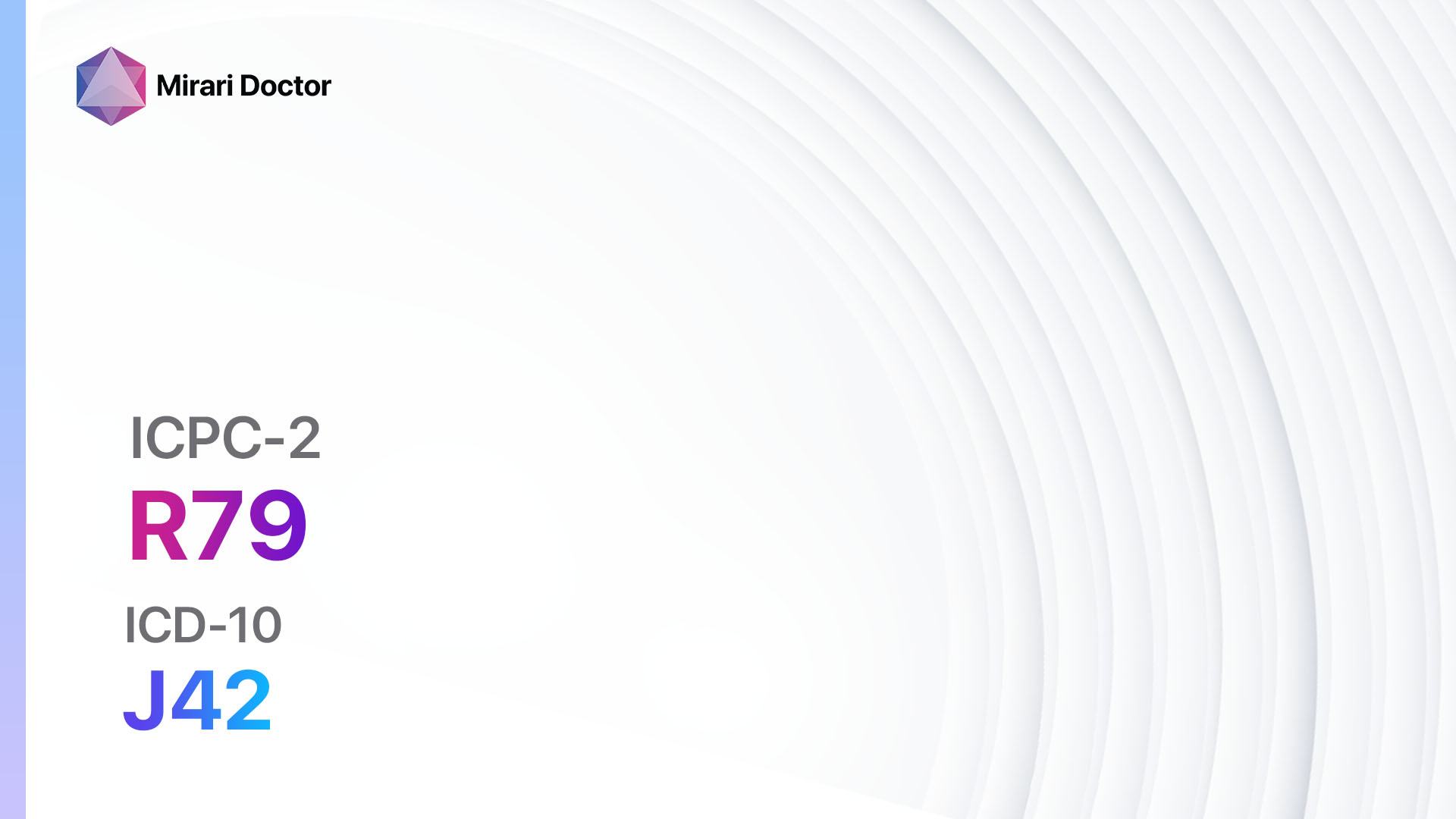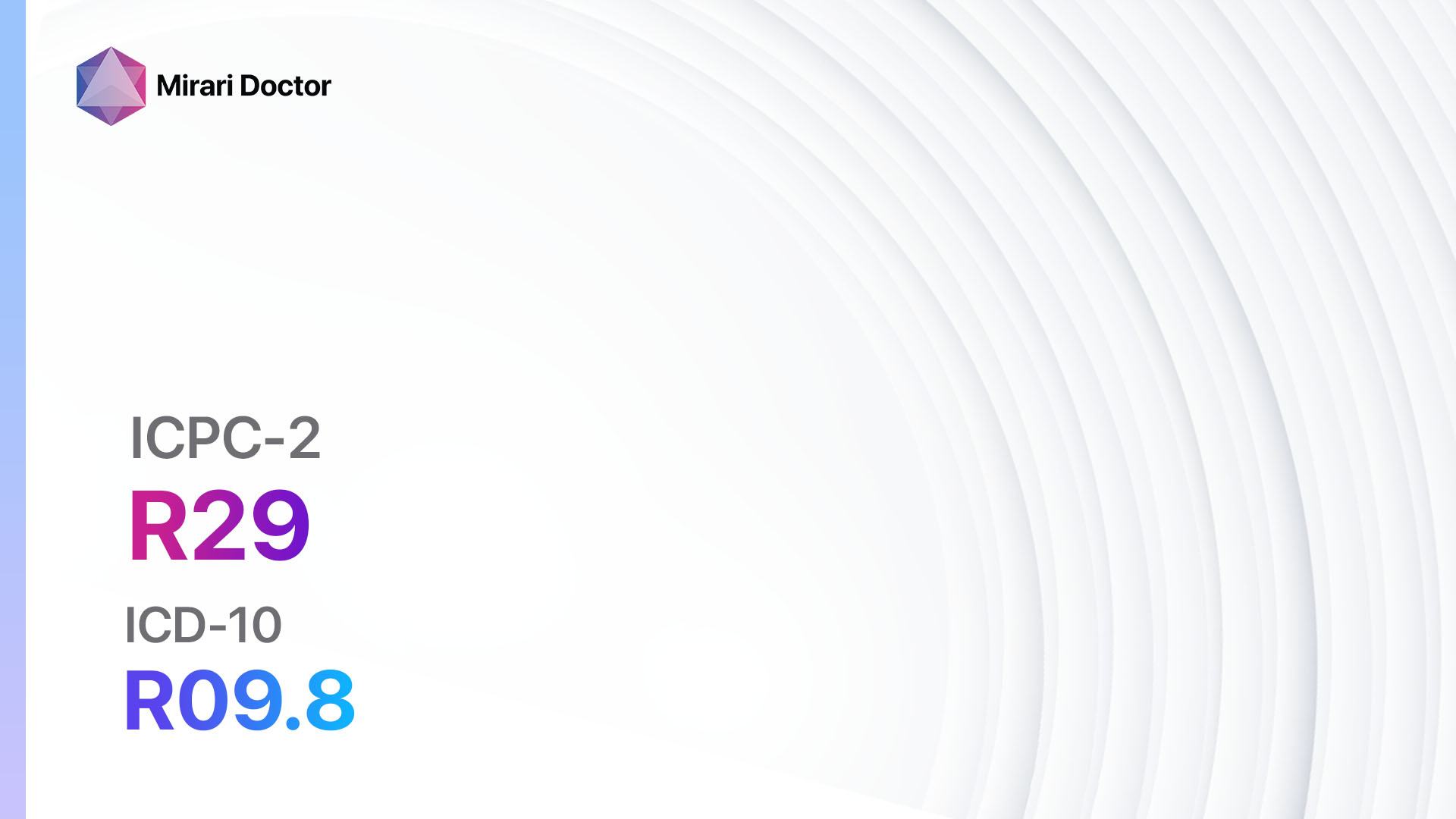
Introduction
Respiratory symptoms or complaints are common and can be caused by various factors, including infections, allergies, and underlying medical conditions[1]. This guide aims to provide an overview of the diagnostic steps and possible interventions for respiratory symptoms or complaints.
Codes
- ICPC-2 Code: R29 Respiratory symptom/complaint oth.
- ICD-10 Code: R09.8 Other specified symptoms and signs involving the circulatory and respiratory systems
Symptoms
- Cough: A sudden, forceful expulsion of air from the lungs, often accompanied by a distinctive sound.
- Shortness of breath: Difficulty breathing or a feeling of not getting enough air.
- Wheezing: A high-pitched whistling sound produced during breathing, often associated with narrowed airways.
- Chest pain: Discomfort or pain in the chest area.
- Sore throat: Pain or irritation in the throat.
- Nasal congestion: Blockage or stuffiness in the nasal passages.
- Runny nose: Excessive discharge of mucus from the nose.
- Sneezing: A sudden, involuntary expulsion of air from the nose and mouth[2].
Causes
- Infections: Respiratory symptoms can be caused by viral or bacterial infections, such as the common cold, flu, bronchitis, or pneumonia.
- Allergies: Allergic reactions to substances such as pollen, dust mites, pet dander, or certain foods can cause respiratory symptoms.
- Asthma: A chronic condition characterized by inflammation and narrowing of the airways, leading to symptoms such as coughing, wheezing, and shortness of breath.
- Chronic obstructive pulmonary disease (COPD): A progressive lung disease that causes airflow limitation and breathing difficulties.
- Environmental factors: Exposure to pollutants, irritants, or toxins in the air can trigger respiratory symptoms.
- Smoking: Smoking tobacco or exposure to secondhand smoke can irritate the airways and lead to respiratory symptoms.
- Other medical conditions: Respiratory symptoms can also be a result of underlying medical conditions, such as heart failure, gastroesophageal reflux disease (GERD), or lung cancer[5].
Diagnostic Steps
Medical History
- Gather information about the patient’s symptoms, including the duration, severity, and any triggering factors.
- Ask about any previous respiratory conditions, allergies, or medical conditions.
- Inquire about the patient’s smoking history and exposure to environmental pollutants.
- Assess the patient’s medical history, including any relevant family history[6].
Physical Examination
- Perform a thorough examination of the respiratory system, including auscultation of the lungs for abnormal sounds.
- Check vital signs, including respiratory rate, heart rate, and blood pressure.
- Inspect the throat and nasal passages for signs of inflammation or infection.
- Evaluate the chest for any abnormalities or tenderness[7].
Laboratory Tests
- Complete blood count (CBC): To assess for signs of infection or inflammation.
- Sputum culture: To identify the presence of bacteria or fungi in the respiratory tract.
- Allergy testing: To determine if allergies are contributing to the respiratory symptoms.
- Pulmonary function tests: To assess lung function and diagnose conditions such as asthma or COPD.
- Arterial blood gas (ABG) analysis: To evaluate oxygen and carbon dioxide levels in the blood[8].
Diagnostic Imaging
- Chest X-ray: To visualize the lungs and assess for any abnormalities, such as pneumonia or lung tumors.
- Computed tomography (CT) scan: To obtain detailed images of the chest and identify structural abnormalities or lung diseases.
- Magnetic resonance imaging (MRI): To evaluate the chest and surrounding structures in more detail, if necessary[9].
Other Tests
- Bronchoscopy: A procedure in which a thin, flexible tube with a camera is inserted into the airways to visualize the lungs and collect samples for further testing.
- Lung biopsy: If a lung tumor is suspected, a small sample of lung tissue may be obtained for examination.
- Sleep study: To assess for sleep-related breathing disorders, such as sleep apnea[10].
Follow-up and Patient Education
- Schedule a follow-up appointment to review test results and discuss further management.
- Provide education on lifestyle modifications, such as smoking cessation, avoiding triggers, and maintaining a healthy weight.
- Discuss the importance of adherence to prescribed medications and follow-up appointments.
- Address any concerns or questions the patient may have.
Possible Interventions
Traditional Interventions
Medications:
Top 5 drugs for respiratory symptoms/complaints:
- Bronchodilators (e.g., Albuterol, Salbutamol):
- Cost: Generic versions can be $10-$50/month.
- Contraindications: Hypersensitivity to the medication.
- Side effects: Increased heart rate, tremors, headache.
- Severe side effects: Chest pain, irregular heartbeat.
- Drug interactions: Beta-blockers, diuretics.
- Warning: Overuse can lead to decreased effectiveness.
- Corticosteroids (e.g., Prednisone, Fluticasone):
- Cost: Generic versions can be $10-$50/month.
- Contraindications: Active infections, systemic fungal infections.
- Side effects: Increased appetite, weight gain, mood changes.
- Severe side effects: Adrenal suppression, osteoporosis.
- Drug interactions: NSAIDs, anticoagulants.
- Warning: Long-term use may require gradual tapering.
- Antihistamines (e.g., Loratadine, Cetirizine):
- Cost: Generic versions can be $5-$20/month.
- Contraindications: Narrow-angle glaucoma, urinary retention.
- Side effects: Drowsiness, dry mouth, blurred vision.
- Severe side effects: Seizures, irregular heartbeat.
- Drug interactions: Sedatives, alcohol.
- Warning: May cause drowsiness, avoid driving or operating machinery.
- Antibiotics (e.g., Amoxicillin, Azithromycin):
- Cost: Generic versions can be $10-$50/month.
- Contraindications: Allergy to the medication.
- Side effects: Upset stomach, diarrhea.
- Severe side effects: Severe allergic reactions, liver damage.
- Drug interactions: Warfarin, oral contraceptives.
- Warning: Only prescribed for bacterial infections.
- Mucolytics (e.g., Acetylcysteine, Guaifenesin):
- Cost: Generic versions can be $5-$20/month.
- Contraindications: Hypersensitivity to the medication.
- Side effects: Nausea, vomiting, runny nose.
- Severe side effects: Severe allergic reactions.
- Drug interactions: None reported.
- Warning: May cause bronchospasm in some individuals.
Alternative Drugs:
- Leukotriene modifiers (e.g., Montelukast): Used for the management of asthma and allergic rhinitis.
- Nasal corticosteroids (e.g., Fluticasone nasal spray): Effective for the treatment of allergic rhinitis.
- Anticholinergics (e.g., Ipratropium bromide): Used as an adjunct therapy for COPD.
Surgical Procedures:
- Lung resection: Surgical removal of a portion of the lung, often performed to treat lung cancer or other lung diseases. Cost: $20,000 to $100,000.
- Lung transplant: Replacement of a diseased lung with a healthy lung from a donor. Cost: $100,000 to $1,000,000.
Alternative Interventions
- Acupuncture: May help improve respiratory symptoms and promote relaxation. Cost: $60-$120 per session.
- Yoga: Breathing exercises and relaxation techniques in yoga can improve lung function and reduce respiratory symptoms. Cost: $10-$20 per class.
- Herbal remedies: Certain herbs, such as eucalyptus, peppermint, or ginger, may provide relief from respiratory symptoms. Cost: Varies depending on the specific herb or supplement.
- Steam inhalation: Inhaling steam from hot water or herbal infusions can help relieve congestion and soothe the airways. Cost: Minimal, using household items.
- Salt therapy: Inhalation of salt particles in a controlled environment may help reduce inflammation and improve respiratory symptoms. Cost: $50-$100 per session.
Lifestyle Interventions
- Smoking cessation: Quitting smoking is crucial for improving respiratory health. Cost: Varies depending on the method chosen (e.g., nicotine replacement therapy, medications, counseling).
- Regular exercise: Engaging in aerobic exercises can improve lung function and overall respiratory health. Cost: Varies depending on the chosen activity (e.g., gym membership, equipment).
- Maintaining a healthy weight: Losing excess weight can reduce the burden on the respiratory system and improve symptoms. Cost: Varies depending on the chosen weight loss method (e.g., diet programs, gym membership).
- Avoiding triggers: Identifying and avoiding triggers, such as allergens or irritants, can help prevent respiratory symptoms. Cost: Minimal, by making changes in the environment (e.g., using air purifiers, avoiding certain foods).
- Proper hygiene practices: Practicing good hand hygiene and avoiding close contact with individuals who have respiratory infections can help prevent the spread of diseases. Cost: Minimal, using soap and water or hand sanitizers.
It is important to note that the cost ranges provided are approximate and may vary depending on the location and availability of the interventions.
Mirari Cold Plasma Alternative Intervention
Understanding Mirari Cold Plasma
- Safe and Non-Invasive Treatment:Mirari Cold Plasma is a safe and non-invasive treatment option for various skin conditions. It does not require incisions, minimizing the risk of scarring, bleeding, or tissue damage.
- Efficient Extraction of Foreign Bodies:Mirari Cold Plasma facilitates the removal of foreign bodies from the skin by degrading and dissociating organic matter, allowing easier access and extraction.
- Pain Reduction and Comfort:Mirari Cold Plasma has a local analgesic effect, providing pain relief during the treatment, making it more comfortable for the patient.
- Reduced Risk of Infection:Mirari Cold Plasma has antimicrobial properties, effectively killing bacteria and reducing the risk of infection.
- Accelerated Healing and Minimal Scarring: Mirari Cold Plasma stimulates wound healing and tissue regeneration, reducing healing time and minimizing the formation of scars.
Mirari Cold Plasma Prescription
Video instructions for using Mirari Cold Plasma Device – R29 Respiratory symptom/complaint oth. (ICD-10:R09.8)
| Mild | Moderate | Severe |
| Mode setting: 1 (Infection) Location: 6 (Throat, Lymphatic & Thyroid) Morning: 15 minutes, Evening: 15 minutes | Mode setting: 1 (Infection) Location: 6 (Throat, Lymphatic & Thyroid) Morning: 30 minutes, Lunch: 30 minutes, Evening: 30 minutes | Mode setting: 1 (Infection) Location: 6 (Throat, Lymphatic & Thyroid) Morning: 30 minutes, Lunch: 30 minutes, Evening: 30 minutes |
| Mode setting: 2 (Wound Healing) Location: 6 (Throat, Lymphatic & Thyroid) Morning: 15 minutes, Evening: 15 minutes | Mode setting: 2 (Wound Healing) Location: 6 (Throat, Lymphatic & Thyroid) Morning: 30 minutes, Lunch: 30 minutes, Evening: 30 minutes | Mode setting: 2 (Wound Healing) Location: 6 (Throat, Lymphatic & Thyroid) Morning: 30 minutes, Lunch: 30 minutes, Evening: 30 minutes |
| Mode setting: 7 (Immunotherapy) Location: 4 (Heart, Bile & Pancreas) Morning: 15 minutes, Evening: 15 minutes | Mode setting: 7 (Immunotherapy) Location: 4 (Heart, Bile & Pancreas) Morning: 30 minutes, Lunch: 30 minutes, Evening: 30 minutes | Mode setting: 7 (Immunotherapy) Location: 4 (Heart, Bile & Pancreas) Morning: 30 minutes, Lunch: 30 minutes, Evening: 30 minutes |
| Total Morning: 45 minutes approx. $7.50 USD, Evening: 45 minutes approx. $7.50 USD | Total Morning: 90 minutes approx. $15 USD, Lunch: 90 minutes approx. $15 USD, Evening: 90 minutes approx. $15 USD | Total Morning: 90 minutes approx. $15 USD, Lunch: 90 minutes approx. $15 USD, Evening: 90 minutes approx. $15 USD |
| Usual treatment for 7-60 days approx. $105 USD – $900 USD | Usual treatment for 6-8 weeks approx. $1,890 USD – $2,520 USD | Usual treatment for 3-6 months approx. $4,050 USD – $8,100 USD |
 |
|
Use the Mirari Cold Plasma device to treat Respiratory symptom/complaint oth. effectively.
WARNING: MIRARI COLD PLASMA IS DESIGNED FOR THE HUMAN BODY WITHOUT ANY ARTIFICIAL OR THIRD PARTY PRODUCTS. USE OF OTHER PRODUCTS IN COMBINATION WITH MIRARI COLD PLASMA MAY CAUSE UNPREDICTABLE EFFECTS, HARM OR INJURY. PLEASE CONSULT A MEDICAL PROFESSIONAL BEFORE COMBINING ANY OTHER PRODUCTS WITH USE OF MIRARI.
Step 1: Cleanse the Skin
- Start by cleaning the affected area of the skin with a gentle cleanser or mild soap and water. Gently pat the area dry with a clean towel.
Step 2: Prepare the Mirari Cold Plasma device
- Ensure that the Mirari Cold Plasma device is fully charged or has fresh batteries as per the manufacturer’s instructions. Make sure the device is clean and in good working condition.
- Switch on the Mirari device using the power button or by following the specific instructions provided with the device.
- Some Mirari devices may have adjustable settings for intensity or treatment duration. Follow the manufacturer’s instructions to select the appropriate settings based on your needs and the recommended guidelines.
Step 3: Apply the Device
- Place the Mirari device in direct contact with the affected area of the skin. Gently glide or hold the device over the skin surface, ensuring even coverage of the area experiencing.
- Slowly move the Mirari device in a circular motion or follow a specific pattern as indicated in the user manual. This helps ensure thorough treatment coverage.
Step 4: Monitor and Assess:
- Keep track of your progress and evaluate the effectiveness of the Mirari device in managing your Respiratory symptom/complaint oth.. If you have any concerns or notice any adverse reactions, consult with your health care professional.
Note
This guide is for informational purposes only and should not replace the advice of a medical professional. Always consult with your healthcare provider or a qualified medical professional for personal advice, diagnosis, or treatment. Do not solely rely on the information presented here for decisions about your health. Use of this information is at your own risk. The authors of this guide, nor any associated entities or platforms, are not responsible for any potential adverse effects or outcomes based on the content.
Mirari Cold Plasma System Disclaimer
- Purpose: The Mirari Cold Plasma System is a Class 2 medical device designed for use by trained healthcare professionals. It is registered for use in Thailand and Vietnam. It is not intended for use outside of these locations.
- Informational Use: The content and information provided with the device are for educational and informational purposes only. They are not a substitute for professional medical advice or care.
- Variable Outcomes: While the device is approved for specific uses, individual outcomes can differ. We do not assert or guarantee specific medical outcomes.
- Consultation: Prior to utilizing the device or making decisions based on its content, it is essential to consult with a Certified Mirari Tele-Therapist and your medical healthcare provider regarding specific protocols.
- Liability: By using this device, users are acknowledging and accepting all potential risks. Neither the manufacturer nor the distributor will be held accountable for any adverse reactions, injuries, or damages stemming from its use.
- Geographical Availability: This device has received approval for designated purposes by the Thai and Vietnam FDA. As of now, outside of Thailand and Vietnam, the Mirari Cold Plasma System is not available for purchase or use.
References
- Fauci AS, et al. Harrison’s Principles of Internal Medicine. 20th ed. New York, NY: McGraw-Hill Education; 2018.
- Irwin RS, et al. Classification of Cough as a Symptom in Adults and Management Algorithms: CHEST Guideline and Expert Panel Report. Chest. 2018;153(1):196-209.
- Eccles R. Understanding the symptoms of the common cold and influenza. Lancet Infect Dis. 2005;5(11):718-725.
- Global Initiative for Chronic Obstructive Lung Disease (GOLD). Global Strategy for the Diagnosis, Management, and Prevention of Chronic Obstructive Pulmonary Disease: 2021 Report.
- Pratter MR. Overview of common causes of chronic cough: ACCP evidence-based clinical practice guidelines. Chest. 2006;129(1 Suppl):59S-62S.
- Bickley LS. Bates’ Guide to Physical Examination and History Taking. 12th ed. Philadelphia, PA: Wolters Kluwer; 2017.
- McCance KL, Huether SE. Pathophysiology: The Biologic Basis for Disease in Adults and Children. 8th ed. St. Louis, MO: Elsevier; 2019.
- Ruppel GL, Enright PL. Pulmonary Function Testing. Respir Care. 2012;57(1):165-175.
- Hansell DM, et al. Fleischner Society: Glossary of Terms for Thoracic Imaging. Radiology. 2008;246(3):697-722.
- Kapur VK, et al. Clinical Practice Guideline for Diagnostic Testing for Adult Obstructive Sleep Apnea: An American Academy of Sleep Medicine Clinical Practice Guideline. J Clin Sleep Med. 2017;13(3):479-504.
Related articles
Made in USA


